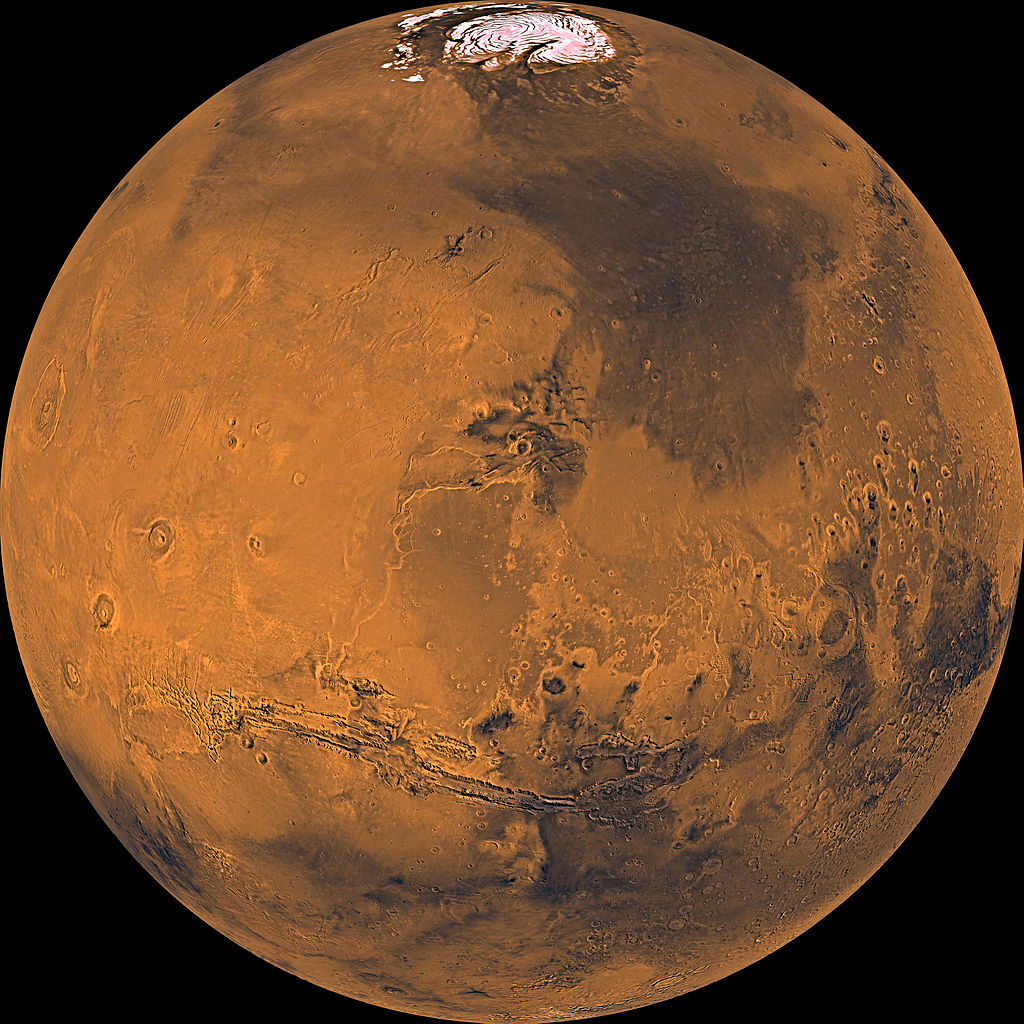Mars Has 'Macroweather,' Just Like Earth

Mars, like Earth, experiences "macroweather" — atmospheric effects that lie in between short-term weather and long-term climate, researchers say.
The discovery might not only shed light on how Earth's atmosphere behaves but could also yield insights on all planets and moons with atmospheres, scientists added.
Weather on Earth changes on a daily basis due to constant fluctuations in the atmosphere, while climate varies over decades. In the past 30 years, researchers have started to understand that Earth's atmosphere also experiences something between these two extremes called "macroweather," said lead study author Shaun Lovejoy, a nonlinear geophysicist at McGill University in Montreal. [Predicting the Future of our Climate (Video)]
To see if other worlds might have macroweather, Lovejoy and his colleagues investigated Mars because its atmosphere is relatively well studied. They analyzed data collected by NASA's Viking 1 and 2 missions, which made measurements on the Martian surface from the mid-1970s through the early 1980s, as well as data collected from orbit by NASA's Mars Global Surveyor spacecraft.
By accounting for how the sun heats the Red Planet, as well as the thickness of the Martian atmosphere, the study team discovered that macroweather exists on Mars, although its time scale is shorter than on Earth. On Mars, the shift from weather to macroweather takes place over 1.8 Martian sols, equivalent to about two Earth days, while that transition takes a week to 10 days on Earth.
These differences mostly have to do with how Earth and Mars differ in size and how much sunlight they receive, researchers said. Mars is only slightly more than half as wide as Earth, about one-tenth of Earth's mass and orbits about 50 percent farther away from the sun than our home planet does.
The findings also revealed that weather on Mars can be predicted only two days in advance, compared to 10 days on Earth. This could "prove tricky for the European lander and rover," study co-author Jan-Peter Muller, of University College London, said in a statement, referring to the ExoMars mission, which aims to launch an orbiter toward the Red Planet in 2016 and a Mars rover in 2018.
Get the Space.com Newsletter
Breaking space news, the latest updates on rocket launches, skywatching events and more!
Lovejoy and his colleagues are currently working on a global macroweather model that may be capable of making forecasts much better than current climate models at the range of months to decades, he told Space.com.
Such research could help scientists increase their knowledge of the weather on Venus, Saturn's moon Titan, potentially the gas giants Jupiter, Saturn, Uranus and Neptune, and exoplanets and exomoons orbiting distant stars.
The scientists detailed their findings online Nov. 13 in the journal Geophysical Research Letters.
Follow us @Spacedotcom, Facebook or Google+. Originally published on Space.com.
Join our Space Forums to keep talking space on the latest missions, night sky and more! And if you have a news tip, correction or comment, let us know at: community@space.com.

Charles Q. Choi is a contributing writer for Space.com and Live Science. He covers all things human origins and astronomy as well as physics, animals and general science topics. Charles has a Master of Arts degree from the University of Missouri-Columbia, School of Journalism and a Bachelor of Arts degree from the University of South Florida. Charles has visited every continent on Earth, drinking rancid yak butter tea in Lhasa, snorkeling with sea lions in the Galapagos and even climbing an iceberg in Antarctica. Visit him at http://www.sciwriter.us









